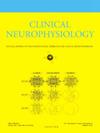Rhythmic EEG patterns: The oldest idea in the EEG world, but without an obvious definition
IF 3.7
3区 医学
Q1 CLINICAL NEUROLOGY
引用次数: 0
Abstract
The word “rhythmic” was quickly introduced in the vocabulary of the electroencephalographers with the discovery of the alpha rhythm and typical discharges of spike-and-waves at 3 Hz in childhood absence epilepsy, but without any definition until recently. In its last revision (2017), the International Federation of Clinical Neurophysiology proposed a specific definition. The word “rhythmic” is “applied to regular waves occurring at a constant period and of relatively uniform morphology.” Unfortunately, there is a serious problem of ambiguity as this definition exactly corresponds in science to the definition of a periodic function (periodic waveform). This definition of regular patterns at constant intervals (constant period) can be applied to physiological rhythms such as alpha and mu rhythms but also to unusual rhythms such as rhythmic theta bursts of drowsiness. It can also be used to describe EEG patterns, such as frontal/temporal/occipital intermittent rhythmic activities or generalized rhythmic delta activities. Except with typical absence seizures, this definition cannot be used to describe most epileptic seizures and absence status epilepticus. Identifying ’periodic’ versus ’rhythmic’ features is crucial when analyzing an EEG in critically ill patients. The importance lies in a balanced approach that frequently promotes an interpretation of an acute encephalopathy when referring to diffuse periodic EEG patterns, and status epilepticus for unreactive bilateral rhythmic patterns. To include seizures and status epilepticus in the definition of rhythmic patterns, we suggest a more “dynamic” approach in addition to the regular waves at constant intervals without interdischarge intervals between waveforms. For the observed rhythmic patterns, we propose: repetition of consecutive waves with, in case of a variation in the pattern, a dynamic approach to these waveforms. Dynamic means spatiotemporal evolution of the patterns.
求助全文
约1分钟内获得全文
求助全文
来源期刊

Clinical Neurophysiology
医学-临床神经学
CiteScore
8.70
自引率
6.40%
发文量
932
审稿时长
59 days
期刊介绍:
As of January 1999, The journal Electroencephalography and Clinical Neurophysiology, and its two sections Electromyography and Motor Control and Evoked Potentials have amalgamated to become this journal - Clinical Neurophysiology.
Clinical Neurophysiology is the official journal of the International Federation of Clinical Neurophysiology, the Brazilian Society of Clinical Neurophysiology, the Czech Society of Clinical Neurophysiology, the Italian Clinical Neurophysiology Society and the International Society of Intraoperative Neurophysiology.The journal is dedicated to fostering research and disseminating information on all aspects of both normal and abnormal functioning of the nervous system. The key aim of the publication is to disseminate scholarly reports on the pathophysiology underlying diseases of the central and peripheral nervous system of human patients. Clinical trials that use neurophysiological measures to document change are encouraged, as are manuscripts reporting data on integrated neuroimaging of central nervous function including, but not limited to, functional MRI, MEG, EEG, PET and other neuroimaging modalities.
 求助内容:
求助内容: 应助结果提醒方式:
应助结果提醒方式:


